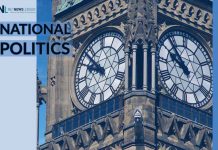Canada’s relative debt position is much worse than the federal government suggests when a larger group of advanced countries are included and total debt is measured, finds a new study released today by the Fraser Institute, an independent, non-partisan, Canadian public policy think-tank.
“The federal government is very quick to point out that the country’s net debt relative to the size of the economy (GDP) is lowest in the G7, but our rank falls to 11th when the group of comparison countries is expanded to the 29 advanced countries—including many European countries and Australia—for which comparable data exists,” said Jason Clemens, executive vice president of the Fraser Institute and co-author of Caution Required When Comparing Canada’s Debt to that of Other Countries.
Moreover, Canada’s relative debt position falls further when total debt is measured instead of debt after adjusting for financial assets. Net debt, which is the measure used by the federal government offsets a part of the country’s total debt by including financial assets.
Specifically, Canada ranks 25th of 29 countries for its total (gross) debt as a share of the economy. In other words, Canada’s total debt relative to GDP is the 5th highest amongst the industrialized world.
“Even within the narrower G7, Canada falls from first to fourth in its debt ranking when total debt rather than debt after financial assets are measured,” commented Clemens.
No other country experiences as pronounced a change in its ranking when moving from a measure of total debt (gross) to debt after financial assets (net debt). Canada drops 14 places in its ranking while Finland, which experiences the second largest decline in its ranking, falls only 6 spots.
The reason Canada’s debt position declines so dramatically when gross debt—and not net debt—is measured is because net debt includes the assets of the Canada Pension Plan and the Quebec Pension Plan, which unlike the public pension programs of other developed countries invests in non-government assets such as stocks and bonds.
As of March 2020, the combined assets of the CPP and QPP, some $488.1 billion, represented roughly one-third of the difference between Canada’s total debt and net debt.
“The idea that the assets of the Canada and Quebec pension plans are available to governments and should be counted against the debt distorts the gravity of Canada’s indebtedness,” Clemens said.







